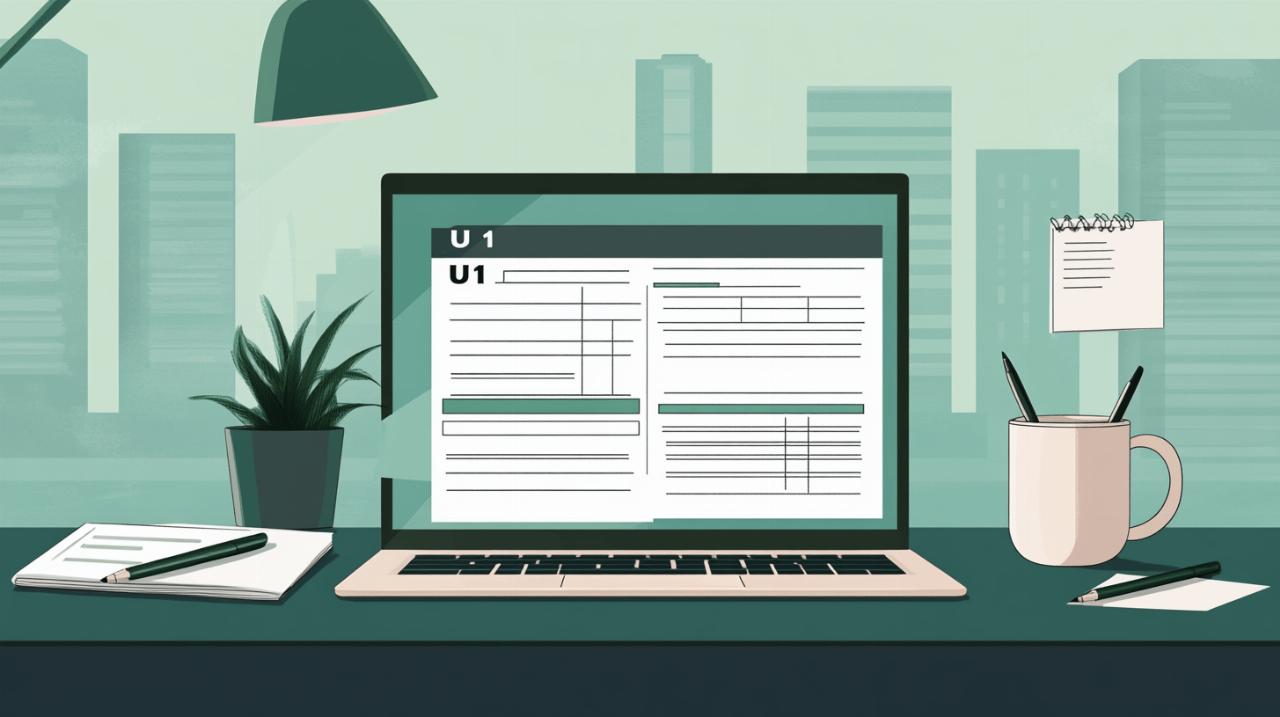When an employee fails to turn up for work without proper authorisation or a reasonable explanation, it creates a difficult situation for employers who rely on their workforce to maintain smooth operations. Unjustified absence, sometimes colloquially referred to as pulling a sickie, is a matter that can have serious repercussions for both the individual and the organisation. Whilst everyone might occasionally face genuine challenges that prevent attendance, repeated or unexplained absences represent a breach of the employment contract and can ultimately lead to dismissal. Understanding the legal framework, maintaining accurate records, and following fair procedures are essential components in managing absence effectively and lawfully.
What constitutes unjustified absence in uk employment law?
Defining unauthorised absence and establishing valid reasons
Unauthorised absence occurs when an employee is not present at work without permission or fails to follow the proper reporting procedure established by the employer. This encompasses situations where an individual arrives late, leaves early without approval, or simply does not attend at all. Companies are strongly encouraged to develop and communicate a clear policy that outlines what counts as unauthorised absence and how issues such as lateness will be addressed. Such a policy serves to set expectations and provides a reference point for both management and staff when questions arise.
A justified absence, on the other hand, is one supported by a demonstrable and legitimate reason. Common examples include illness backed by medical certification, pre-arranged holiday leave, compassionate leave for family emergencies, or absence due to public duty such as jury service. When an employee provides appropriate evidence and follows the correct notification procedure, the absence is considered authorised. The distinction between justified and unjustified absence is critical, as it determines whether the employer has grounds to take disciplinary action. Employers must avoid any discriminatory practices when recording absence or lateness, ensuring for instance that pregnancy-related absences are recorded separately and handled with the sensitivity required by law.
The Difference Between Genuine Illness and 'Pulling a Sickie'
Genuine illness is a valid reason for absence, particularly when supported by medical evidence such as a doctor's note. However, claiming illness without proof or misrepresenting the reason for absence constitutes misconduct. Pulling a sickie, as the phrase is commonly understood, refers to an employee who pretends to be unwell or fabricates another excuse to avoid coming to work. This behaviour is considered a serious breach of trust and can lead to disciplinary action, including dismissal in cases where the pattern is repeated or particularly egregious.
Employers have a responsibility to assess each case on its individual merits. Whilst a single instance of absence without a medical certificate might be addressed informally, a pattern of suspicious or unexplained absences warrants a more formal approach. It is important for employers to strike a balance between supporting employees who are genuinely unwell and addressing those who abuse the system. Clear communication of expectations and consistent application of absence policies are essential to maintaining fairness and trust within the workplace.
Proper documentation methods for recording employee absences
Essential records employers must maintain for absence management
Maintaining accurate and detailed records of employee absences is a fundamental aspect of effective absence management. Employers should keep a comprehensive log that includes the date of each absence, the reason provided by the employee, any supporting documentation received, and details of any communication regarding the absence. This record-keeping serves multiple purposes, including identifying patterns of absence that may require intervention, providing evidence in the event of disciplinary proceedings, and ensuring compliance with data protection regulations.
Employers must also ensure that records are stored securely and accessed only by authorised personnel. Data protection rules require that personal information, including health-related data, is handled with care and confidentiality. Regular reviews of absence records can help employers spot trends and offer support to employees who may be struggling with health or personal issues. This proactive approach not only benefits employee well-being but also reduces the risk of long-term absence and associated costs.
Creating an Audit Trail: Medical Certificates and Supporting Evidence
An audit trail of supporting evidence is crucial when managing absence-related dismissals. Medical certificates, also known as fit notes, provide objective evidence of an employee's health condition and are a key component of the documentation process. Employers should request a fit note for absences lasting more than seven days, although some organisations may require certification for shorter periods depending on their internal policies. These documents should be retained as part of the employee's personnel file and referenced during any disciplinary proceedings.
In addition to medical certificates, employers should document all communications with the employee regarding their absence. This includes emails, letters, and notes from telephone conversations or meetings. Creating a contemporaneous record of each interaction helps to build a clear picture of the situation and demonstrates that the employer has acted fairly and in accordance with proper procedures. This audit trail is invaluable if the dismissal is later challenged at an employment tribunal, as it provides evidence that the employer followed a fair and transparent process.
Implementing a Fair Disciplinary Procedure for Absence-Related Dismissals
The Five Critical Stages of a Lawful Disciplinary Process
 A fair disciplinary procedure is essential to ensure that any dismissal is lawful and does not result in a claim for unfair dismissal. The process typically involves five critical stages. First, the employer must conduct a thorough investigation to gather all relevant facts about the absence, including the employee's explanation and any supporting evidence. This stage is about establishing the full picture before making any decisions.
A fair disciplinary procedure is essential to ensure that any dismissal is lawful and does not result in a claim for unfair dismissal. The process typically involves five critical stages. First, the employer must conduct a thorough investigation to gather all relevant facts about the absence, including the employee's explanation and any supporting evidence. This stage is about establishing the full picture before making any decisions.
Second, the employer must notify the employee in writing of the allegations and the potential consequences, including the possibility of dismissal. The employee should be given sufficient notice of any disciplinary meeting to allow them to prepare a response. Third, the employee must be given an opportunity to respond to the allegations and present any evidence or mitigating circumstances. This is a fundamental aspect of natural justice and ensures that the employee is heard.
Fourth, a disciplinary hearing should be held to discuss the matter in detail. The employee has the right to be accompanied by a colleague or trade union representative. During the hearing, all evidence should be considered, and the employee should be given a fair chance to explain their actions. Finally, the employer must communicate the outcome in writing, explaining the decision and informing the employee of their right to appeal. This right to appeal is a crucial safeguard that allows the employee to challenge the decision if they believe it is unjust.
Documenting each step: written warnings and meeting records
Documenting each stage of the disciplinary process is vital. For non-serious misconduct, such as occasional lateness or unauthorised absence, employers should follow a progressive approach. This typically involves an informal discussion, followed by a verbal warning, a first written warning, a final written warning, and ultimately dismissal if the behaviour does not improve. Each warning should be documented in writing and clearly state the nature of the misconduct, the improvement expected, and the timeframe within which it must occur.
For serious misconduct, a first and final written warning may be issued, signalling that any further breach will result in dismissal. In cases of gross misconduct, such as theft, violence, or deliberate falsification of absence records, summary dismissal may be justified. However, even in these circumstances, the employer must follow a fair procedure, including an investigation and a chance for the employee to respond. All meetings should be documented with detailed notes, which should be shared with the employee. These records serve as evidence that the employer has acted in accordance with the ACAS Code of Practice and has given the employee every opportunity to improve or defend themselves.
Employee absence reporting procedures and record-keeping requirements
Establishing clear notification protocols in your workplace
Clear notification protocols are the foundation of effective absence management. Employees must understand how and when to report an absence, and employers must communicate these expectations clearly from the outset. Typically, an employee is required to inform their line manager as soon as possible on the first day of absence, ideally before their shift is due to start. The notification should include the reason for the absence and an indication of when the employee expects to return to work.
Employers should set out the acceptable methods of notification, whether by telephone, email, or through a designated absence reporting system. It is generally not acceptable for an employee to notify a colleague or leave a message with reception unless this is explicitly permitted by company policy. Regular updates are also important, particularly for longer absences, so that the employer can plan accordingly and offer support where needed. Clear protocols help to reduce misunderstandings and ensure that absences are recorded accurately and promptly.
Best practices for maintaining contemporaneous absence logs
Maintaining contemporaneous absence logs means recording information as events occur rather than relying on memory at a later date. This practice ensures that records are accurate, complete, and can be relied upon in any subsequent proceedings. Employers should establish a system for logging absences immediately, noting the date, time of notification, reason provided, and any supporting documentation requested or received. This might be done through an electronic absence management system or a manual log, depending on the size and resources of the organisation.
Contemporaneous records are particularly important if an employer needs to demonstrate that they have followed a fair procedure and that the employee's absences were unjustified. Employers also have a duty to check on the well-being of employees who do not turn up for work, particularly lone workers who may be more vulnerable. This includes checking for planned absences, contacting the employee and their emergency contact, and in extreme cases, arranging a welfare check by visiting the employee's home or contacting the police. All of these actions should be documented to show that the employer has taken reasonable steps to ensure the employee's safety and to understand the reasons for the absence. By adhering to these best practices, employers can manage absence fairly, support employee well-being, and protect themselves from potential legal challenges.





